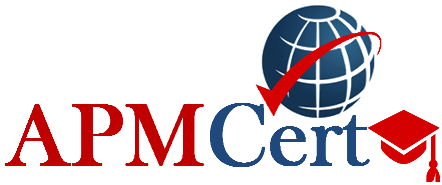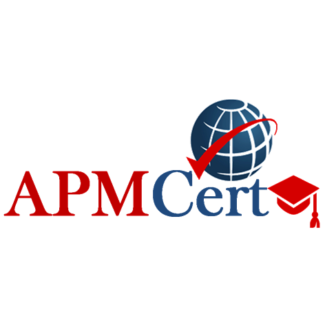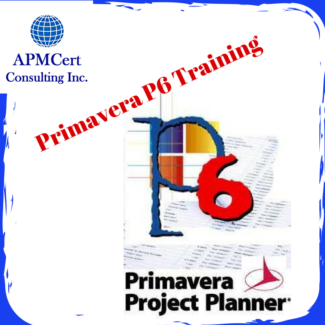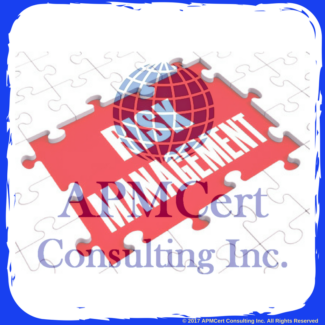IT Project Management – Part #1
April 11, 2018
Nowadays you may hear lots of discussions about IT Project Management, and there are lots of confusions for the individuals who are new to IT and Project Management Field. We at APMCert Consulting Inc believe the best way to expand project management in general and IT projects in particular we should do our part. It is why we are sharing some concepts and step by step stages on providing useful information to those who are new to this industry and those who want to refresh their knowledge in concepts, tools and techniques and best practices on IT Project Management.
Here are some key steps:
- We cannot run projects in isolation :
- Projects must operate in a broad organizational environment
- Project managers need to use systems thinking: taking a holistic view of carrying out projects within the context of the organization in other word looking at the big picture of how a particular project fits into the rest of the organization. It is important for project managers to understand the broader organizational environment to ensure their projects meet organizational needs.
- Senior managers must make sure projects continue to support current business needs
- Understanding organizations and differences between functional, matrix, and project organizations :
Functional organizations have managers or vice presidents in specialties such as engineering, manufacturing, information technology, and so on. Their staffs have specialized skills in their respective disciplines.
Project organizations have project managers instead of functional managers reporting to the CEO.
Matrix organizations represent the middle ground between functional and project structures. Personnel often report to both a functional manager and one or more project managers. Project managers have the most authority in project organizational structures followed by matrix, and then functional.
- How organizational culture is related to project management :
Organizational culture is a set of shared values, assumptions, and behaviors that characterize the functioning of an organization. This culture can definitely impact project management. For example, if an organization values project management and follows the guidelines for applying it, it will be much easier to practice good project management. Project work is most successful in an organizational culture where employees identify more with the organization, where work activities emphasize teams, and where there is strong unit integration, performance-based rewards, high risk tolerance, high conflict tolerance, an open-systems focus, and a balanced focus on people, control, and means-orientation.
- Stakeholder Engagement :
- Project managers must take time to identify, understand, and manage relationships with all project stakeholders, plus understanding their needs and expectations
- Senior executives/top management are very important stakeholders
- Phases in a traditional project life cycle? Differentiating project life cycle from a product life cycle? Why does a project manager need to understand both?
- A traditional project life cycle is a collection of project phases¾concept, development, implementation, and close-out. These phases do not vary by project.
- Product life cycles vary tremendously based on the nature of the project. For example, the Systems Development Life Cycle (SDLC) could follow the waterfall model, spiral model, incremental release model, prototyping model, or RAD model. Using the general phases of the SDLC (information systems planning, analysis, design, implementation, and support) there could be a project to develop a strategic information systems plan; another project to complete a systems analysis for a new system; another project to create a detailed database design; another to install new hardware or software; and another to provide new user training.
- What makes IT projects different? How should project managers adjust themselves?
- IT projects are different from other types of projects because they can be very diverse in terms of size and complexity, they often include team members with very diverse backgrounds and skills, and he technologies involved are also very diverse.
- Project managers should adjust to these differences by paying careful attention to the goals of the project and the needs of various stakeholders.
- Globalization, outsourcing, virtual teams, and agile project management is out there and these trends are changing IT project management.
- Globalization has created a “flat” world where everyone is connected and the “playing field” is level for many more participants.
- Outsourcing is when an organization acquires goods and/or sources from an outside source.
- Agile project management is a method for managing projects when requirements are unclear or change quickly.
- Virtual teams occur when a group of individuals who work across time and space using communication technologies.
- Each of these trends has affected the way in which project work is done and how projects need to be managed.
- It is very rare for a project team to sit in the same work area and work at the same time.
- Management and coordination is much more complicated.
- Key Terms Part 1 :
- adaptive software development (ASD) — A software development approach used when requirements cannot be clearly expressed early in the life cycle
- agile — Quick and coordinated in movement; a methodology based on iterative and incremental development, in which requirements and solutions evolve through collaboration
- agile software development — A method for software development that uses new approaches, focusing on close collaboration between programming teams and business experts
- champion — A senior manager who acts as a key proponent for a project
- deliverable — A product or service, such as a technical report, a training session, a piece of hardware, or a segment of software code, produced or provided as part of a project
- executive steering committee — A group of senior executives from various parts of the organization who regularly review important corporate projects and issues
- functional organizational structure — An organizational structure that groups people by functional areas such as IT, manufacturing, engineering, and human resources
- human resources frame — A frame that focuses on producing harmony between the needs of the organization and the needs of people
- IT governance — The authority and control for key IT activities in organizations, including IT infrastructure, IT use, and project management
- kill point — A management review that should occur after each project phase to determine if projects should be continued, redirected, or terminated; also called a phase exit
- matrix organizational structure — An organizational structure in which employees are assigned both to functional and project managers
- offshoring — Outsourcing from another country
- organizational culture — A set of shared assumptions, values, and behaviors that characterize the functioning of an organization
- outsourcing — An organization’s acquisition of goods and services from an outside source
- phase exit — A management review that should occur after each project phase to determine if projects should be continued, redirected, or terminated; also called a kill point
- political frame — A frame that addresses organizational and personal politics
- politics — Competition between groups or individuals for power and leadership
- predictive life cycle — A software development approach used when the scope of the project can be articulated clearly and the schedule and cost can be predicted accurately
- project acquisition — The last two phases in a project (implementation and close-out) that focus on delivering the actual work
- project feasibility — The first two phases in a project (concept and development) that focus on planning
- project life cycle — A collection of project phases, such as concept, development, implementation, and close-out
- project organizational structure — An organizational structure that groups people by major projects
- Scrum — The leading agile development methodology for completing projects with a complex, innovative scope of work
- structural frame — A frame that deals with how the organization is structured (usually depicted in an organizational chart) and focuses on different groups’ roles and responsibilities to meet the goals and policies set by top management
- symbolic frame — A frame that focuses on the symbols, meanings, and culture of an organization
- systems — Sets of interacting components working within an environment to fulfill some purpose
- systems analysis — A problem-solving approach that requires defining the scope of the system to be studied, and then dividing it into component parts for identifying and evaluating its problems, opportunities, constraints, and needs
- systems approach — A holistic and analytical approach to solving complex problems that includes using a systems philosophy, systems analysis, and systems management
- systems development life cycle (SDLC) — A framework for describing the phases involved in developing and maintaining information systems
- systems management — Addressing the business, technological, and organizational issues associated with creating, maintaining, and modifying a system
- systems philosophy — An overall model for thinking about things as systems
- systems thinking — A holistic view of an organization to effectively handle complex situations
- virtual team — A group of people who work together despite time and space boundaries using communication technologies.




